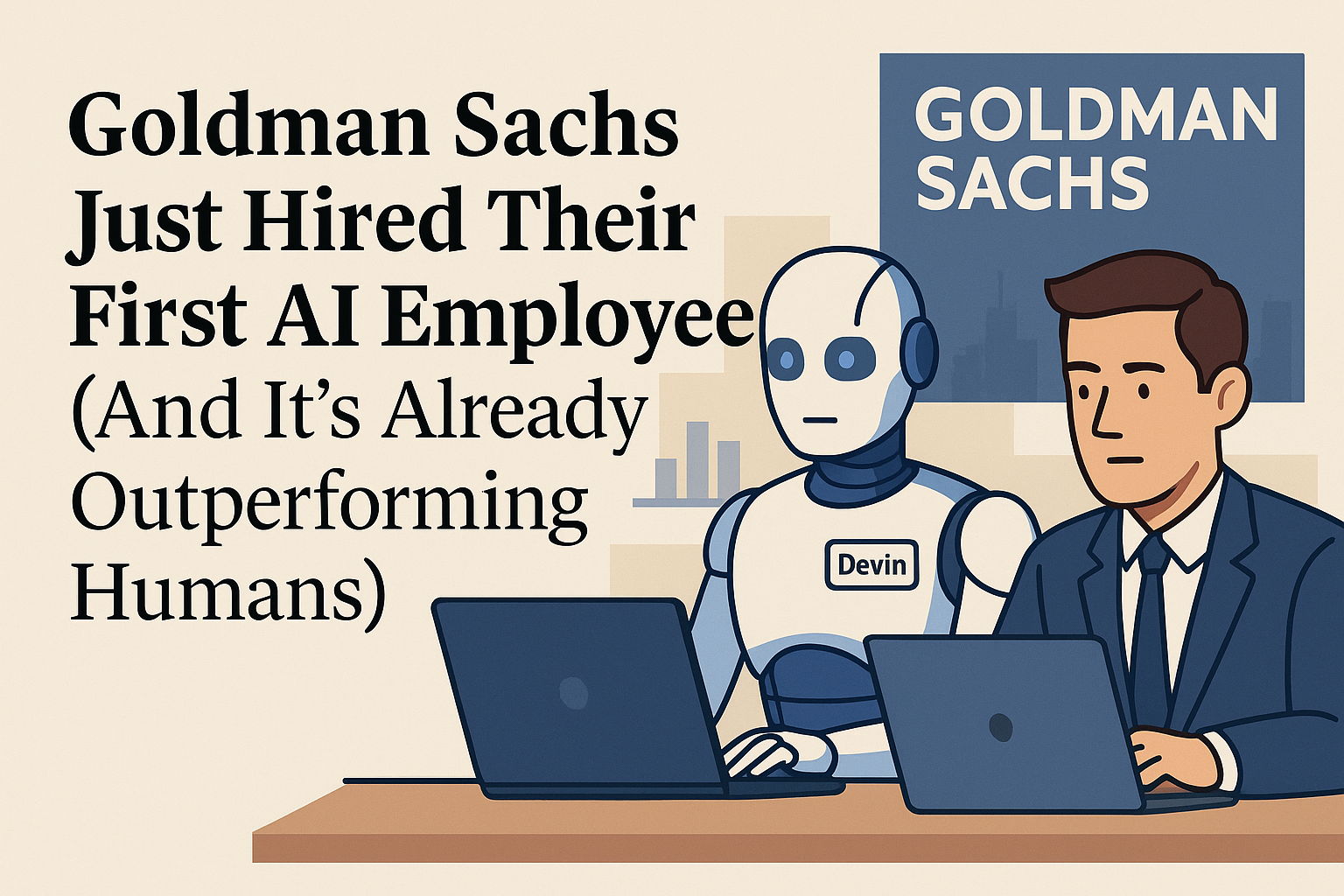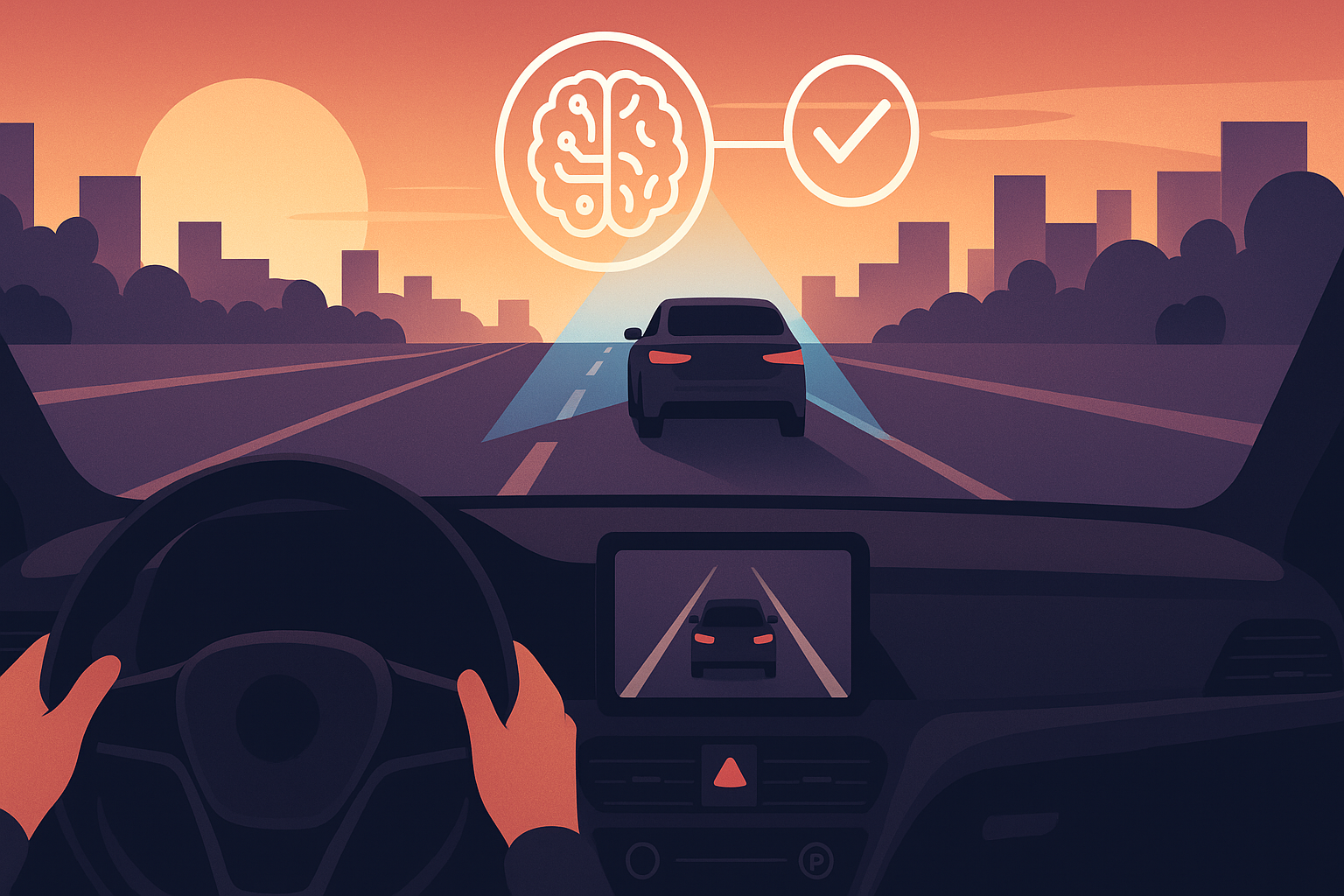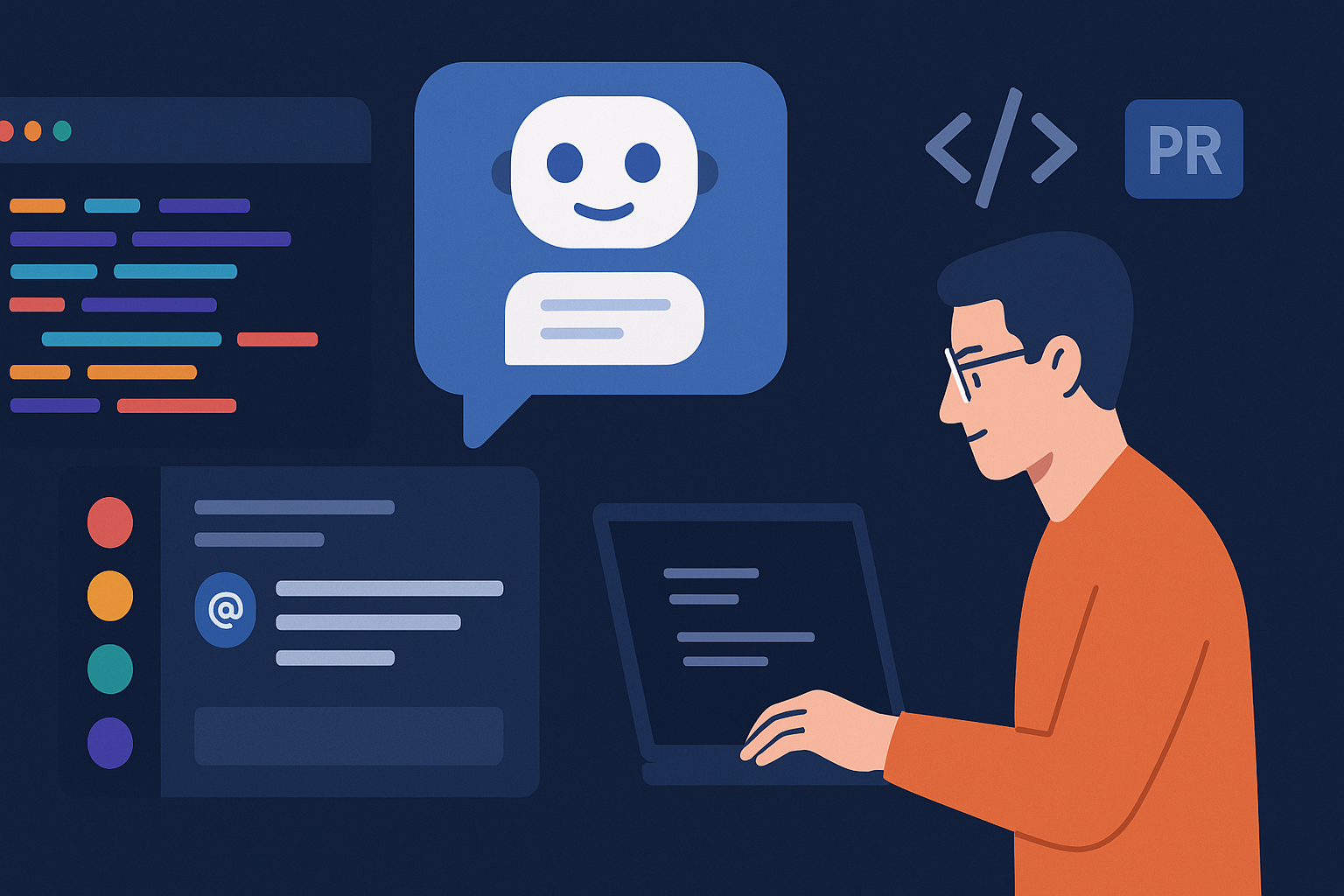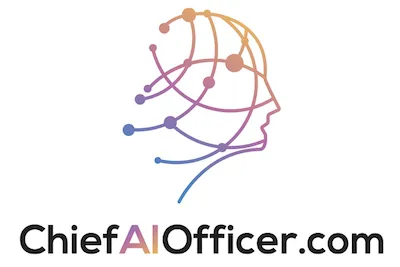While most executives debate whether AI will replace workers, Goldman Sachs made a decision that shocked Wall Street. They hired Devin, an autonomous AI engineer, as their newest employee. Not as a tool. Not as a consultant. As a full member of their 12,000-person development team. This bold move signals a shift in how companies are starting to integrate AI into their workforce, embracing innovation rather than fearing it. As other firms watch closely, Goldman Sachs is setting a precedent that aligns with trends like the IBM AI transformation in HR, which aims to streamline recruitment and enhance employee engagement. By incorporating AI in such a strategic capacity, they are paving the way for a new era of collaboration between humans and machines. This bold move signals a significant shift in the banking sector, as Goldman Sachs implements AI for employees, setting a precedent for how technology can be integrated into the workforce. By embracing AI at this level, the firm aims to enhance productivity and innovation, rather than simply replacing human talent. Industry analysts are now keenly observing how this decision will impact the company’s culture and overall performance in a rapidly evolving financial landscape. This bold move has sparked discussions about the future of work in the financial sector, especially in light of recent trends like the Amazon AI job cuts analysis, which demonstrates how companies are grappling with the implications of automation. By integrating AI into their workforce in such a direct manner, Goldman Sachs aims to enhance productivity and innovation, positioning themselves ahead of competitors who remain hesitant. As industry leaders watch closely, this decision could redefine the relationship between human talent and artificial intelligence in the workplace. This bold move signals a shift in how companies view the role of AI within their organizations. In fact, Goldman Sachs has been integrating insights from industry leaders, including IBM AI strategy insights, to enhance their technological capabilities. By embracing this innovative approach, they aim to not only optimize efficiency but also redefine the future of collaboration between humans and machines.
The results are already staggering. Three to four times productivity gains. Engineering teams moving faster than ever. And a competitive advantage that’s putting distance between Goldman and every other financial institution on the planet.
Here’s the strategic playbook they used and why every executive needs to understand what just happened in the banking industry. This isn’t about technology adoption. This is about workforce transformation that creates sustainable competitive advantage.
The Executive Decision That Changed Banking Forever
Goldman Sachs CIO Marco Argenti didn’t implement another coding assistant. He made a strategic workforce decision that fundamentally reimagines how high-stakes financial institutions operate in the AI era.
Devin isn’t generating code suggestions like GitHub Copilot. This AI engineer writes complete software solutions, debugs complex systems, executes multi-step engineering projects, and delivers production-ready code. All without human intervention during the development process.
The strategic implications are massive. While competitors debate AI integration, Goldman is building operational capabilities that scale engineering output without proportional increases in headcount. They’re not just adopting AI. They’re establishing market position through workforce transformation.
Why This Matters for Every Executive
Most companies treat AI as productivity software. Goldman Sachs treats AI as strategic personnel. That difference in thinking creates competitive advantages that compound over time.
Traditional development teams face linear scaling constraints. More projects require more engineers. Bigger engineering teams create exponential complexity in management, coordination, and quality control. Goldman just broke this constraint completely.
Their development capacity now scales independently from headcount. Complex engineering projects get completed faster. Human engineers focus exclusively on high-value strategic work. And their operational leverage increases dramatically with every new initiative.
The Autonomous Engineering Revolution
Devin operates fundamentally differently from traditional AI coding tools. While most AI assists human developers, Devin replaces entire workflows that previously required human execution.
The AI receives engineering tickets, analyzes requirements, researches documentation, writes complete solutions, tests the code, and submits production-ready deliverables. Human engineers review and approve the work, but the entire development process happens autonomously.
This isn’t theoretical capability. Hundreds of Devin instances are currently handling real engineering assignments across Goldman’s technology infrastructure. The bank plans to scale this to thousands of instances based on project demand.
For executives, this represents a new operational model. Engineering capacity becomes elastic. Project timelines compress. Resource allocation optimizes automatically. And development quality maintains consistency regardless of project volume.
The Productivity Multiplication Effect
Goldman’s early results demonstrate productivity gains that most executives assumed were impossible. Teams using Devin report three to four times faster completion rates for complex engineering tasks compared to traditional AI-assisted development. This remarkable efficiency is not only revolutionizing engineering workflows but also setting a new benchmark for innovation across various industries. By leveraging advanced AI capabilities, organizations are now poised to tackle challenges that were previously deemed insurmountable. A prime example of this is BASF’s chemical research transformation, which illustrates how embracing cutting-edge technology can lead to unprecedented advancements in product development.
This productivity multiplication creates strategic advantages beyond cost reduction. Faster development cycles mean quicker market responses. Reduced engineering bottlenecks enable more ambitious strategic initiatives. And improved resource allocation drives innovation velocity that competitors struggle to match.
The financial impact scales exponentially. Instead of hiring dozens of additional engineers for new projects, Goldman deploys AI instances that deliver equivalent output. Capital previously allocated to headcount expansion gets redirected toward strategic initiatives that drive competitive advantage. This shift not only boosts efficiency but also opens up new avenues for revenue generation. As firms like Goldman leverage technology, the impact of AI on billing models becomes increasingly apparent, allowing for more dynamic pricing strategies that align with value delivered. This transformation positions companies to respond swiftly to market demands while optimizing their cost structures.
Goldman’s approach reveals the future of high-performance organizations. They’re not replacing human engineers. They’re fundamentally restructuring how engineering work gets distributed between human intelligence and AI capabilities.
Human engineers transition from code implementation to solution architecture, strategic oversight, and creative problem-solving. The AI handles execution-heavy tasks that require precision and consistency but not strategic thinking.
This workforce evolution creates career advancement opportunities while eliminating mundane work that burns out talented engineers. Employee satisfaction increases because professionals focus on work that leverages their unique human capabilities.
Competitive Positioning Through AI Leadership
By becoming the first major financial institution to integrate autonomous AI engineers, Goldman Sachs establishes market leadership that creates sustainable competitive advantages. This innovative approach allows the firm to streamline operations and reduce costs while simultaneously improving service delivery. In addition to their advancements, they can learn from other institutions; for instance, HSBC AI enhances fraud detection, showcasing the effectiveness of integrating AI in financial services. As a result, Goldman Sachs can further fortify its position by leveraging insights gained from the successes of others in the industry.
While competitors debate AI implementation strategies, Goldman builds operational capabilities that deliver superior customer experiences, faster product development, and more efficient operations. The gap between AI-powered organizations and traditional approaches widens every quarter.
This first-mover advantage becomes increasingly difficult to replicate as Goldman refines their AI integration processes, builds institutional knowledge around human-AI collaboration, and develops proprietary methodologies for autonomous engineering management. As competitors attempt to catch up, they may find themselves struggling to implement similar frameworks without the same depth of experience. In contrast, Heineken’s innovative AI strategies showcase an effective blend of traditional industry expertise and cutting-edge technology, providing valuable insights that further highlight Goldman’s unique position. This increasing gap emphasizes the challenges faced by others in the sector as they seek to establish their own competitive edge.
The Hybrid Workforce Model
Goldman’s vision extends beyond individual AI employees to comprehensive workforce transformation. They’re building hybrid teams where human executives define strategic objectives, AI agents execute complex implementation work, and human specialists provide oversight and quality assurance.
This model optimizes resource allocation across every dimension that matters to executives. Strategic talent focuses on activities that drive business growth. Routine execution happens faster and more consistently through AI. And operational costs decrease while output quality improves.
The scalability advantages are extraordinary. Business growth no longer requires proportional increases in operational complexity. Teams can handle larger projects, shorter timelines, and higher quality standards without exponential increases in management overhead.
Implementation Strategy for Executives
Goldman’s approach provides a proven framework for executives considering autonomous AI integration. The key principles focus on strategic workforce transformation rather than technology deployment.
They started with clear business objectives: increase engineering productivity, reduce time-to-market for new initiatives, and optimize resource allocation across development projects. Every implementation decision served these strategic goals rather than pursuing AI capabilities for their own sake.
The integration prioritized human-AI collaboration over human replacement. Engineers gained powerful capabilities that amplified their strategic impact while eliminating work that provided limited career development value.
Most importantly, Goldman measured success through business outcomes, not technology metrics. Productivity gains, project completion rates, resource utilization efficiency, and competitive positioning determine the program’s strategic value.
Risk Management and Quality Control
Goldman’s autonomous AI integration includes sophisticated oversight mechanisms that ensure quality and mitigate operational risks. All AI-generated work receives human review before production deployment. Critical systems maintain multiple validation layers. And strategic decision-making remains exclusively under human control.
This approach addresses executive concerns about AI reliability while capturing the productivity benefits of autonomous execution. The AI handles routine implementation work with consistency and speed that human developers struggle to match. Human engineers focus on strategic oversight and complex problem-solving that requires creativity and business judgment.
The risk profile actually improves compared to traditional development approaches. AI-generated code follows consistent patterns, includes comprehensive testing, and maintains documentation standards that human developers sometimes overlook under deadline pressure.
Industry Transformation Implications
Goldman’s AI engineer integration signals broader industry transformation that affects competitive dynamics across financial services and beyond. Organizations that successfully implement autonomous AI capabilities will establish operational advantages that traditional approaches cannot match.
The productivity gains, resource optimization, and scalability benefits create sustainable competitive moats. Companies that wait for AI technologies to mature further risk falling behind competitors who establish AI-powered operational capabilities now.
For executives, this represents both strategic opportunity and competitive urgency. The window for first-mover advantage narrows as AI capabilities become more accessible and implementation methodologies become standardized. As organizations strive to leverage AI for improved efficiency and innovation, the role of chief AI officers in business has become increasingly pivotal. These leaders not only guide the strategic integration of AI technologies but also ensure that their firms remain agile in a rapidly changing landscape. Failing to effectively harness these capabilities may result in missed opportunities and a diminished market position.
Measuring Strategic Success
Goldman evaluates their AI engineer program through metrics that matter to boards and investors: productivity multiplication, resource utilization optimization, competitive positioning strength, and operational leverage improvement.
The three to four times productivity gains translate directly to cost advantages and faster market response capabilities. Reduced engineering bottlenecks enable more ambitious strategic initiatives. And improved resource allocation drives innovation velocity that creates sustainable competitive advantage.
These business outcomes demonstrate ROI that extends far beyond technology cost savings. AI integration becomes a strategic capability that drives revenue growth, market share expansion, and operational excellence.
The Executive Imperative
Goldman Sachs proved that autonomous AI integration isn’t future possibility but current competitive necessity. Organizations that treat AI as productivity software will find themselves competing against companies that treat AI as strategic personnel.
The choice facing executives is clear: lead workforce transformation or react to competitors who establish AI-powered operational capabilities first. The technology exists today to implement similar systems across industries and organizational sizes.
The companies that understand this strategic imperative will build sustainable competitive advantages through AI-powered workforce transformation. The ones that wait will find themselves managing traditional operational constraints while AI-enabled competitors scale capabilities that conventional approaches cannot match.
Goldman Sachs just demonstrated the playbook for executive AI leadership. The question isn’t whether autonomous AI will transform business operations. The question is whether you’ll lead this transformation or spend the next decade catching up to competitors who do. As the capabilities of autonomous AI continue to evolve, organizations must strategize effectively to harness its potential for enhancing decision-making and operational efficiency. Leveraging insights from platforms like Bloomberg’s AI in finance could be crucial, as they offer cutting-edge tools that can reshape investment strategies and risk management. Those who adopt such technologies early will not only set the industry standard but also gain a significant competitive edge in a rapidly changing landscape.




